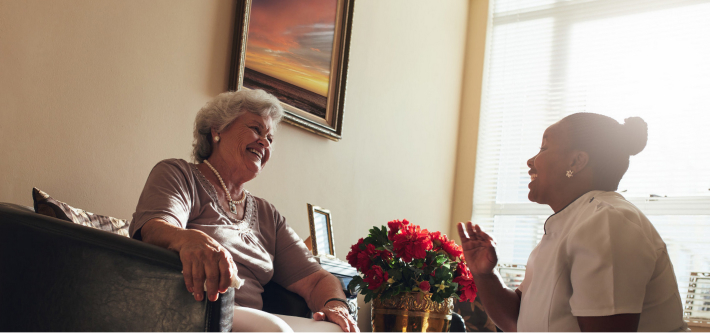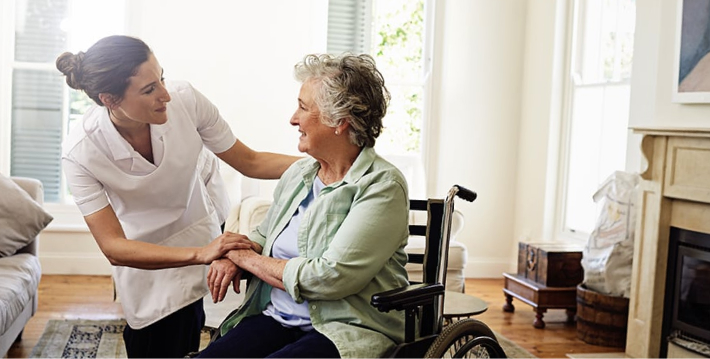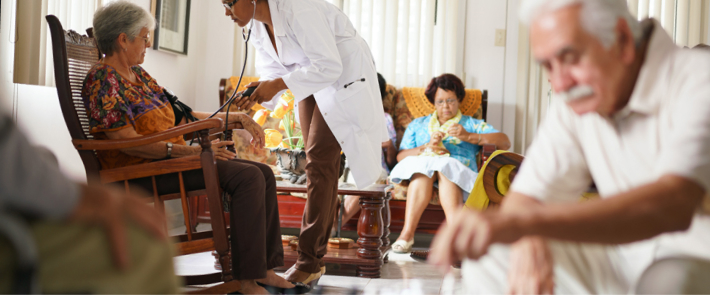Better Senior Care
In Ontario, assisted living facilities to come in both for-profit retirement communities and publicly funded ones.

Supportive Housing Overview for Ontario Seniors
When seniors require assistance with health care, personal care, housekeeping, and other tasks, they have a variety of supportive housing options to choose from. There are two types of senior housing available:
- Private pay: Retirement communities offering Independent Living, Assisted Living, Memory Care, or Respite Care are included in this.
- Government subsidized: Seniors can get publicly supported care or respite care in nursing homes or long-term care facilities, as well as at home with home care.
Private Retirement Homes in Ontario
Whether they are referred to as retirement homes or senior living communities, they are dwellings for seniors who pay to have their care provided in a secure, home-like setting. They range from inexpensive lodging to luxurious homes with hotel-style amenities. Private suites in an apartment, condominium or townhome are the norm for lodging, with communal areas for socializing. The cost depends on the amount of luxury, the size of the suite, the location, the level of care needed, and the style of housing. Many residences offer multiple levels of care under one roof, in contrast to some retirement homes that only offer one or two levels of care.

Independent Living
The greatest seniors for independent living are those who need little help and want to delegate cooking, cleaning, and maintenance while continuing to be active, involved, and social.
Assisted Living
Assisted living is intended for seniors who want to live an active lifestyle while receiving support with everyday tasks including mobility, grooming, personal hygiene, medication management, etc. It provides all the same benefits as independent living.
Dementia Care
Seniors in Memory Care receive specialized 24/7 assistance and services from trained professionals in a safe environment for those with dementia, such as Alzheimer’s.
Short-Term Stays
When they require help recovering from an illness or surgery or when their careers are away, seniors choose a supportive respite to stay in a retirement community. Seniors can get a taste of the retirement community’s way of life with a brief trial stay. Both offer a fully furnished private suite and full access to the residence’s amenities, eating options, and activities.
End-of-Life Care
Most private retirement communities provide care for their inhabitants up to their death.
Private Home Care
Numerous seniors in Ontario use home care services so they can stay in their homes while getting help with personal care, nursing care, housework, and other things. Numerous people, home care businesses, service providers, and home care organizations that cater to elders in Ontario can be found with a short online search. Consider the hazards and obligations of hiring private home care if you’re thinking about hiring a home care provider to come to your home.
Publicly Funded Senior Care in Ontario
For the elderly who can no longer live alone without some daily assistance, long-term care facilities or nursing homes are available and are subsidized by the provincial government. Seniors who receive nursing care around-the-clock receive assistance with daily tasks (eating, bathing, mobility, etc.). In a long-term care facility, residents are responsible for room and board while the government pays for nursing and personal care. Seniors who qualify could be given an additional government subsidy for a rate break.

Public Adult Day Programs
Designed to support seniors and offer relief to caregivers, adult day programs provide supervision and activities in a group setting. Even though there is a cost associated with attendance, the government offers subsidies to those who qualify for these adult daycare programs.
Subsidized Home Care
The Ontario government provides funding for a variety of services to assist seniors who need care for those who qualify. Qualifying seniors who choose to stay at home can get nursing care, personal care, homemaking (cleaning, laundry, shopping, planning and cooking meals), etc. through Local Health Integration Networks (LHINs). Seniors who meet the requirements can also get subsidized end-of-life care at home. Seniors in Ontario who are ineligible for government-funded services may opt for private home care.
Better Senior Care Association
If you’re near to retiring or have already begun to enjoy the freedom of retirement, you undoubtedly already realize how little money you have saved and how much future medical expenses will cost. In fact, 32% of Canadians between the ages of 45 and 64 have no retirement savings and will need to find a way to pay for their medical care as they get older.
Better Senior Care helps older people to arrange their lives in retirement.

Healthcare Services Provided
As they get older, seniors frequently desire to remain in the comfort of their own homes, but they aren’t always supported in doing so. Your children are worried about you as well because they want to make sure that you’re comfortable, safe, and healthy if your physical abilities start to deteriorate. Publicly subsidized home care services are the ideal choice for people who qualify. Better Senior Care provides the following home care services:
- Personal Support
- Home Support
- Nursing Care
- Physiotherapy
- Occupational Therapy
- Speech-Language Pathology
- Dietitian Services
- Social Work
Long-term Care Facilities
Everyone faces the choice of staying at home or looking for alternative living arrangements at some point in their lives. While long-term care facilities’ living expenses can be paid by the government, retirement homes are not financed by the government. Even if looking for alternative housing isn’t a decision or an impending expense, it’s comforting to know that the Ontario government offers assistance if the need arises.
But first, it’s important to note the distinctions between retirement homes and long-term care institutions. Seniors who reside in retirement communities pay a fee for their lodgings and are independent of medical staff. Retirement homes are excellent for seniors who want to preserve their freedom and are in good health, but these facilities are not supported by the government. Retirement homes may not be the ideal choice for you if you’re concerned about your budget.
However, the cost of lodging is covered by the government in long-term care facilities, and there are always medical professionals on duty. Long-term care facilities, on the other hand, are designed exclusively for seniors who are unable to reside in their homes due to an injury, ageing, a handicap, or another medical condition. They are not intended to be a less expensive option for retirement homes. Long-term care facilities providing 24-hour nursing and personal care are an alternative if home care has been eliminated as a possibility.
Health Care Technologies
With so many new technologies on the horizon, the field of health care technology is expanding. Client care is incorporating technologies like virtual reality, artificial intelligence, and 3D printing. Remote patient monitoring, however, is one of the most cutting-edge medical technology. Patients can have a team of healthcare professionals watch their vital signs from a distance while they are undergoing remote patient monitoring.
Cloud DX is one of the top remote patient technologies in Canada. All of the equipment required to take vital sign readings is included in the connected health kit, along with a tablet for viewing the findings and communicating with your doctor. Physicians, caregivers, family members, and anybody else in your circle of care can remotely check your vital signs. You can establish goal values for vital sign readings, reminders for taking prescriptions, and alerts for when vital sign readings are outside of the normal range using the Cloud DX.
That’s correct, you may drastically cut down on how often you see the doctor or the hospital by taking your own vitals at home and having them remotely checked by your doctor. As a result, you’ll spend less money on transportation, lose less time from your day, experience less stress, and, most significantly, feel better about your own health.
